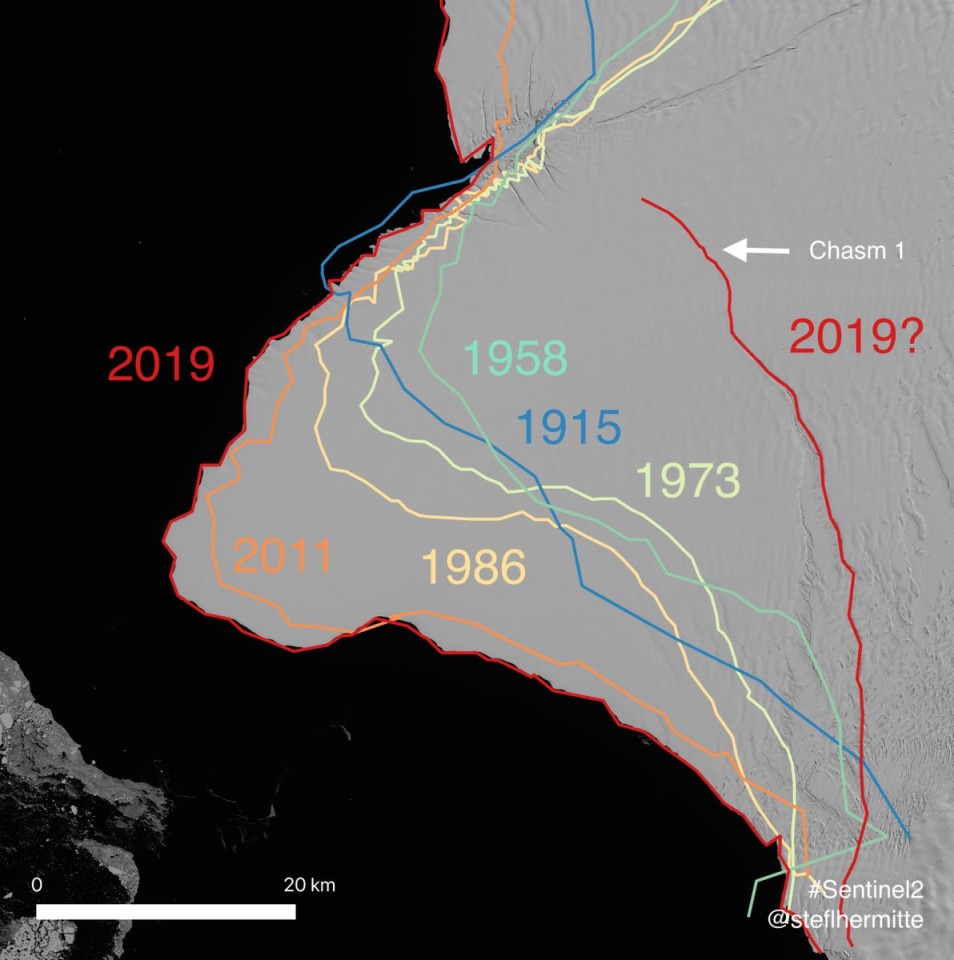Gepubliceerd op 19 maart 2019
The Copernicus Sentinel-1 radar mission shows how cracks cutting across Antarctica’s Brunt ice shelf are on course to truncate the shelf and release an iceberg about the size of Greater London – it’s just a matter of time.
The Brunt ice shelf is an area of floating ice bordering the Coats Land coast in the Weddell Sea sector of Antarctica.
Using radar images from the Copernicus Sentinel-1 mission the animation shows two lengthening fractures: a large chasm running northwards and a split, dubbed Halloween Crack, that has been extending eastwards since October 2016. They are now only separated by a few kilometres.
Halloween Crack runs from an area known as McDonald Ice Rumples, which is where the underside of the otherwise floating ice sheet is grounded on the shallow seabed. This pinning point slows the flow of ice and crumples the ice surface into waves.

Changing location of Brunt calving
Brunt ice shelf is at its maximum extent during the satellite era and compared to images collected by Argon declassified intelligence satellite photographs in 1963 and maps made by Frank Worsley during the Endurance expedition into the Weddell Sea in 1915.
History shows that the last event was in 1971 when a portion of ice calved north of the Ice Rumples and in what appears to have been a previous iteration of today’s Halloween Crack which is separating along lines of weakness.
Mark Drinkwater, Head of ESA’s Earth and Mission Science Division, says, “Importantly, tracking the entire ice shelf movement reveals a lot going on north of the Halloween Crack, where the shelf flows in a more northerly direction. Meanwhile, this divergence is splitting the northern and southern parts of the shelf along the Halloween Crack.